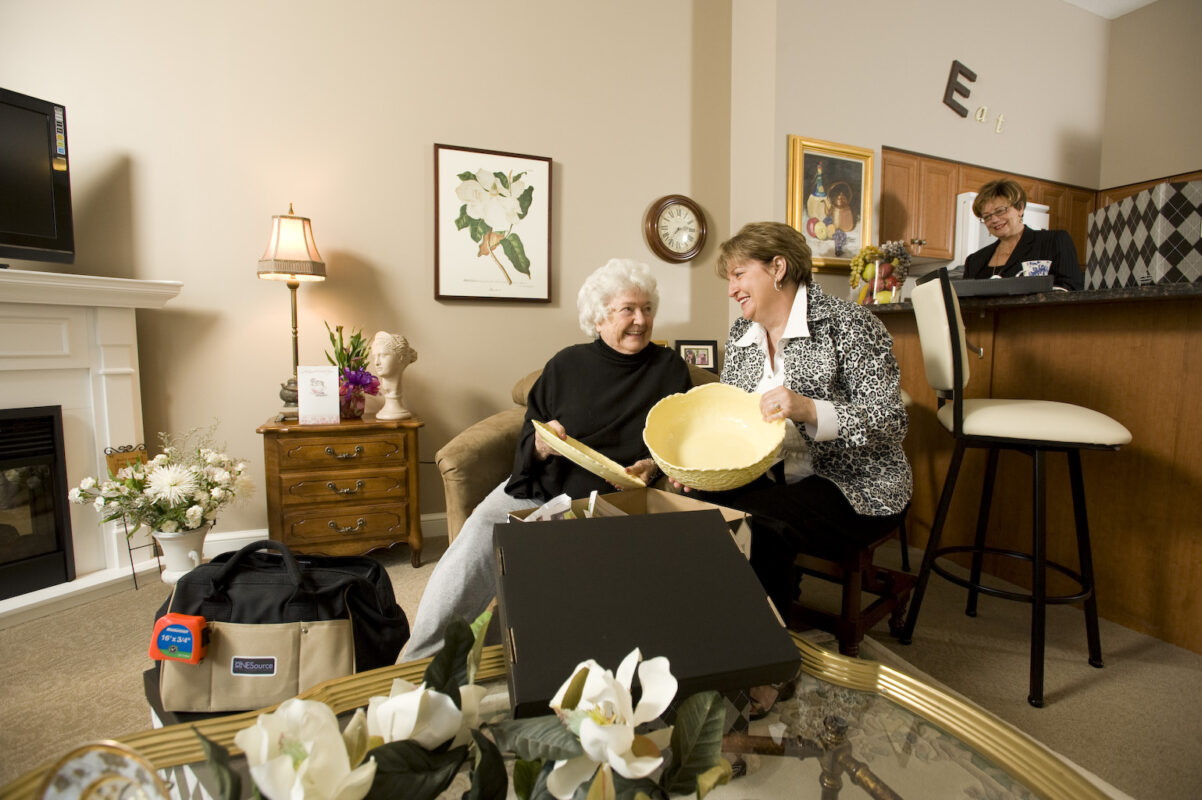Consider the following benefits:
Safety and security
Improved Health and Wellness
You can socialize.
Deciding on when to move into a retirement community is a very complicated decision. While many people always wait for a crisis-hit before making the move, it’s often advisable to plan ahead of time and move before something bad happens.
Of course, we’re still the same person inside, even though the person in the mirror has changed.
Age is just a number; you’re still you, no matter how many birthday candles you’ve blown out. Getting older isn’t so much about the end of something as it is the beginning of something new
“Retirement is such an outdated term,” says Dr. Jane Barratt, Secretary-General of the International Federation on Ageing, an international non-governmental organization with its headquarters in Toronto. “There’s no particular age or condition that signifies that a person should move to other accommodation or even require help in their home; it’s all about function and autonomy.”
With advancements in technology, health, wellness, and medicine, Canadians are living longer and healthier lives. Now many of us are enjoying vibrant lives well past 80, 90, even 100. You may have retired from work, but not from life. How, and where, you spend your time is more important than ever.
“It’s never too early to start thinking about retirement. So many people walk into a retirement home and say, ‘I wish I’d done this earlier. This is especially true for people who’ve recently lost a spouse, or who live in neighbourhoods that their friends have moved away from,” says Laurie Johnston, chief executive officer of the Ontario Retirement Communities Association.
Moving to a Retirement Residence
If you are thinking about transitioning to senior community living but not sure where to begin, here are some tips to help you get started
Retirement communities, like those offered by Weston Retirement Village, are designed for active seniors who are ready to trade in chores and responsibilities for a simplified lifestyle – a lifestyle that allows more time for friends, family and, of course, fun.
In our residence you not only have a suite of your own that you’ve chosen, but you also have delicious meals, social activities, a thriving environment and the ability to let someone else think about mundane tasks like cleaning so that you can focus on what matters to you most. You also have the comfort of knowing that you have access to the care and support you need to manage your health, through onsite or visiting care professionals.
1. Talk with your family
Now is the time to talk with your family about your desire to live independently.
Planting the seed about your desire to move makes the conversation less threatening for adult children who may fear change. It ensures your wishes as well your family’s can be shared, heard, and discussed without pressure.
Once they’re on board with the idea, ask them to help you through the process. Involving your family in your decision will reassure them that their feelings and opinions are important to you.
2. Know your Options
When you choose to move to either a retirement community or long term care home as the next step for you, the best way to find out what better fits your lifestyle is to tour some communities.
If the community
Take a friend or family member along, to bounce your thoughts off and to share the experience. Most retirement homes offer short-term stays, try it out for a week or two, This will give you a true sense of daily life, and is especially important if you’re considering a move to a new neighbourhood or city.
Before taking a tour, create a checklist (or use ours, below) that covers everything from care and cleanliness to rooms and amenities.
Download our retirement community checklist
3. Financial Planning

Making a financial plan is crucial as well. Though independent retirement living can be as affordable as living at home, you can do the math. See if your current expenses outweigh the cost of monthly rent or vice versa. To help you calculate what you can comfortably afford, click here (Affordability Calculator)
Financial Planning and Senior Living
For most families, cost is a key consideration when weighing the benefits of a senior living community. However, you may be surprised to learn that many older adults actually spend more by living alone and paying separately for a mortgage or rent, utilities, groceries, home care and transportation. This worksheet will help you compare the costs. Just plug in your current expenses and the rates provided Weston Retirement Village.
| Current Monthly Expenses | Your Present Home | Weston Retirement | |
| 1 | Mortgage or Rent Payment | ||
| 2 | Caregiving | ||
| 3 | Home or Renter’s Insurance | ||
| 4 | Utilities (Electricity, Gas, Water, Sewer, Trash Removal) | Included* | |
| 5 | Property Insurance & Taxes | Included | |
| 6 | Lawn Care & Landscaping Maintenance | Included | |
| 7 | Housekeeping | Included | |
| 8 | Maintenance & Home Repairs | Included | |
| 9 | 24-Hour Security | Included | |
| 10 | Laundry Service (Washer & Dryer) | Included* | |
| 11 | Transportation (Insurance, Gas, Registration, Repairs) | Included | |
| 12 | Dining | Included | |
| 13 | Social, Cultural & Recreational Events | Included | |
| 14 | Exercise & Wellness Programs | Included | |
| 15 | 24-Hour Emergency Alert System | Included | |
| 16 | Full-Time Activities Staff | Included |
Step 1: Calculate your current cost of living. Include your current monthly expenses such as:
Household Expenses
- Mortgage or rent
- Condo fees
- Property taxes
- Electricity
- Heating
- Water, sewage, garbage
- Cable, Internet
- Meals, snacks, groceries
- Entertainment (gym, clubs, outings, etc.)
Household Services and Repairs
- Housekeeping, flat linens laundry
- Gardening, snow removal
- Home security monitoring
- Major repairs and upkeep (furnace tune-up, gutter cleaning, appliances, roof replacement, etc.; estimate 1% of home’s value per year)
Step 2: Estimate your monthly income
You may have income from multiple sources including savings, a pension, etc. Tally up your monthly income to see what you can afford. Be sure to include the following:
Government Income Sources
- CPP/QPP (Canada Pension Plan or Quebec Pension Plan)
- Old Age Security
- Guaranteed Income Supplement
- Other benefits such as disability, Trillium Fund, etc.
- Savings, Investment and Other Income
- Retirement plans (RRSP or RRIF)
- Life Income Fund (LIF) and Locked-in Retirement Income Fund (LRIF)
- Investments (dividends, interest, TFSA, annuities, etc.)
- Company pension plan
- Other income (family, alimony, trust fund, royalties, rentals, etc.)
Monthly Income from Sale of Home/Cottage
- Monthly income from real estate proceeds (note: proceeds can be invested to generate a monthly income; some seniors also draw on the principal to help pay expenses)
- Estimate the monthly investment income (e.g., $400,000 invested at 2% generates monthly income of $675)
- Estimate how much you will draw on the principal each month
Preparing to Downsize
You are looking forward to setting up your new home. All that’s left is the packing.
As a starting point, create a list that includes things you’re planning to keep and items you no longer want.
You might prefer to have someone with you as you downsize, not just to help, but also to share memories with. After all, this is your stuff we’re talking about. And we know you’ve got stories to tell. So don’t hesitate to talk it through. This should be fun, too.

Whatever you end up giving away, know that you’ll feel joy in seeing these items bring joy to someone else. As well, don’t be surprised if you feel elated after lightening your load. It’s time to focus on setting up your new space. Just the way you want it.
1. Make a plan
Think about your new space and what you will need to make it comfortable. Everything else can be stored in a storage locker, sold second-hand or passed on to relatives or friends
2. Start small and take your time
Go room by room or tackle a few pieces of furniture at a time. You’ll be amazed by how good you feel after dealing with the old junk drawer! It is expensive and sometimes unnecessary to haul big pieces of furniture with you to a new place. Think about the necessities: do I really need those extra guest beds and dressers
4. Let it go
If you haven’t worn something for two years, it’s a good sign that you won’t miss it too much. Donate or sell the clothing that’s been hiding in the back of your closet.
5. Share, sell, donate
If a family member wants one of your belongings, set a date for them to pick it up. After that date passes, donate it or sell it online or at a yard sale
6. Bringing in the professionals will help keep you organized and reduce stress.


